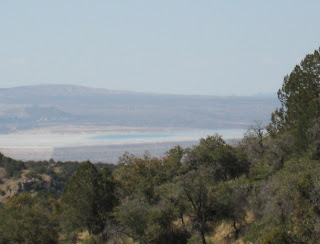
The city of Tucson, Arizona could use many things, like mid-level jobs to fill that void between rocket science and “Do you want fries with that?” Another crying need for people and wildlife alike is a Shade Initiative. During the searing heat of late spring and summer, there is nary a place to escape to. Sunscreen only does so much for Homo sapiens, and other animals take refuge where they can find it.
Many desert animals have simply become nocturnal, hiding in burrows or crevices in rocks by day. Even creatures that don’t actively dig will use the abandoned burrows of animals that do. Rattlesnakes will hole up in an old ground squirrel tunnel. Sometimes occupant and interloper will grudgingly share space, such as the many mammals, birds, other reptiles, and invertebrates that are frequently found cozying up to desert tortoises in their dens.

My own experience has showed that even insects will seek respite from the midday heat. One recent excursion to an artificial riparian area in Fort Lowell Park revealed an amazing spectrum of sheltering insects among the dense stands of cattails along the edge of the lower pond. Even butterflies like the Leda Ministreak, Great Purple Hairstreak, Empress Leilia, and Fiery Skipper work their way into the cool heart of the emergent vegetation.

Other insects present include an abundance of bees, wasps, and flies. You have to look closely. The wasps and bees are often tiny. On this day, June 21, 2010, I tallied wasps in the families Bethylidae, Chalcididae, Braconidae, Ichneumonidae, and Sphecidae. Sweat bees, especially males in the genus Lasioglossum (family Halictidae) were also common.
In the past I have observed fair numbers of “tarantula hawk” wasps, and even cicada killers in the ranks of roosting Hymenoptera.

The habit of seeking midday shelter does not escape the predators of these insects. Robber flies (family Asilidae) weave their way in and out of the cattails and pounce on unsuspecting prey of all kinds. Meanwhile, jumping spiders prowl each leaf and lynx spiders (Oxyopidae) lie in ambush to catch unsuspecting flies and other insects.
As I leave the park, I try and stay in the shade, but the mesquite, cottonwood, and ornamental pecan and eucalyptus trees are planted sparsely in the landscaped lawns. Once out of the park altogether, shade is even harder to find. There is no mandate to plant shade trees here, though Tucson Clean and Beautiful is perhaps slowly changing that through its ”Trees for Tucson” and Home Shade Tree programs.
The hot sidewalk, where there is a sidewalk, nearly melts the soles of my shoes. I grow hot and thirsty quickly. I pass by a sign in the flowerbeds warning not to drink the “reclaimed” water from the drip irrigation system. Fine, but then give me a public drinking fountain every few blocks. The bus stop is one of the few that do offer meager shelter. Most have no shelters, or the shelters are oriented such that “shelter” is rendered meaningless. I make a note to myself to consider leaving Tucson and relocating to a place with both shade and water.
















